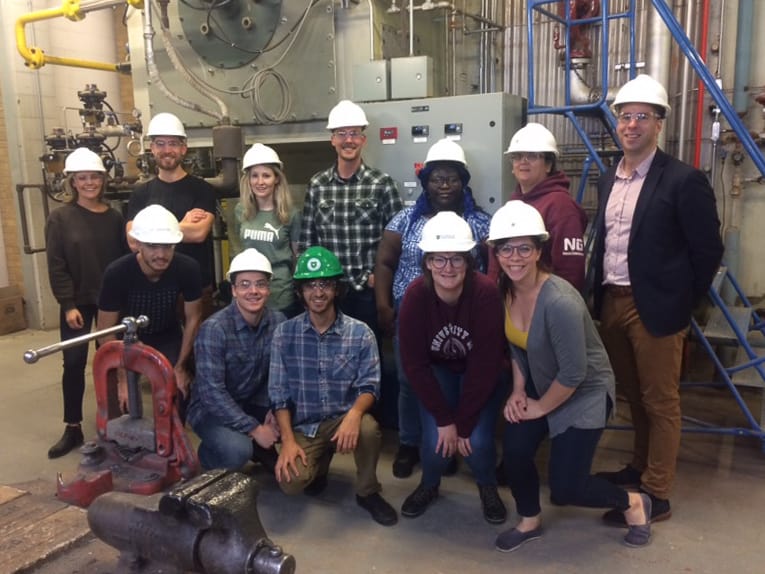
Climate change is the greatest challenge of our generation. Each day seems to deliver a new warning about our planetary emergency.
The World Meteorological Organization reports that the atmospheric concentration of carbon dioxide — the main greenhouse gas responsible for global warming — rose to 407.8 parts per million in 2018, the highest concentration observed in approximately four million years.
The United Nations Environment Programme’s 2019 emissions report states that global GHG emissions must decline by 7.6 per cent each year starting in 2020 if the world hopes to meet the goals of the Paris Agreement. But in 2018, global GHG emissions increased by 3.4 per cent.
Writing last week in the journal Nature, leading climate scientists warned that we’re dangerously close to triggering several irreversible tipping points in the Earth’s climate system — including the loss of the Amazon rainforest and the West Antarctic ice sheet.
Making matters worse, neither national nor international environmental laws have stemmed the tide of rising emissions and related climatic changes, including increasing nutrient pollution, ocean acidification and biodiversity loss.
Other governance actors like cities, non-governmental organizations and universities are stepping up to help close the gap between political rhetoric and policy reality. Inspired by the University of California’s efforts to become carbon-neutral, our course on environmental law set out this semester to examine how to decarbonize the University of Saskatchewan.
Here’s what we’ve learned.
The university the world needs
In 2012, the University of Saskatchewan committed to reducing its GHG emissions by 20 per cent below its 2006-2007 level by 2020. Regrettably, the university won’t meet its goal. And since 2007, its emissions have increased by 7.8 per cent.
Institutional GHG emissions are typically measured using three scopes. Scope one emissions are an institution’s direct emissions from sources it controls, whereas scope two are the indirect emissions from the electricity it purchases. And scope three emissions are all of its other indirect emissions, including from purchased goods and services, solid waste disposal and its members’ business travel and daily commuting.
The U of S’s scope one emissions arise from its consumption of natural gas and fuel for heating and cooling buildings, and from the animals and fertilizer it uses for agriculture. These emissions account for approximately 37 per cent of the university’s total.
Scope two emissions — amounting to approximately 52 per cent of the university’s total — arise from purchasing electricity from the provincial utility’s grid, which is largely powered by the planet’s most carbon-intensive energy source, coal.
Scope three emissions comprise the remainder, though it’s important to add that the university currently measures only a fraction of these emissions because they don’t include daily employee and student commuting.
Despite these unsustainable practices, the university intends to continue to grow by adding more students and more buildings. That means more natural gas, more coal-based electricity, more travel, more solid waste and more GHG emissions.
The good news is that the university recently embarked on a new sustainability planning process. During our course on environmental law, we immersed ourselves in cutting-edge climate science and policy research, and we learned a number of important lessons that should drive the university’s efforts to become a zero-carbon institution.
Equally important, we had the privilege of learning from Indigenous knowledge-keepers, and we remain humbled by their wisdom. During an afternoon of land-based learning, Bob Badger, a Saulteaux cultural advisor, taught us the Saulteaux principle of way-way-ni-ka-binsoosayin, or “watch your next step.”
As the university envisions its future in relation to the land and waters of Treaty 6 Territory and the Homeland of the Métis, we can think of no more important lesson.
Paris of the Prairies
To make the Paris Agreement a reality at the U of S, our next step must be away from fossil fuels and towards renewable energy. While a number of universities have spent millions on natural-
gas-fueled combined-heat-and-power plants, or CHP, the U of S must not follow this step backwards.
CHP delivers marginal improvements in energy efficiency, and made sense when the world hoped that natural gas might be a “bridge fuel” to transition from coal to renewable energy. But we’ve learned that natural gas supply chains emit far more methane — a GHG approximately 30 times more heat-trapping than carbon dioxide over a 100-year period — than previously estimated. Natural gas may be the GHG equivalent of coal.
Moreover, econometric modeling shows that CHP’s cost efficiencies disappear under a high fossil-fuel price scenario, a scenario likely to materialize sooner rather than later.
So what should be the university’s next step? Solar energy. Our city’s motto is “Saskatoon Shines,” and the university already has five solar-array projects. It’s time to step it up and begin the modular implementation of utility-scale solar power generation like Arizona State University.
Over the past decade, ASU has installed 174,664 photovoltaic panels and 8,652 concentrator photovoltaic modules for a total generation capacity of 53 megawatts, enough to power 53,000 homes.
The U of S can further innovate by investing in agrivoltaics, the co-location of solar energy and food production. The university should also explore generating biogas from solid waste to replace natural gas as well as establishing a micro-grid to produce electricity from multiple sources of renewable energy.
Meanwhile, we need to rethink how we work and study. That means changing how we commute by improving car-pooling, public transit and bike sharing. It also means changing what we eat — going vegan for two-thirds of meals lowers food-related emissions by 60 per cent — and reducing waste. We also need to reconsider whether we really need to fly to conferences and competitions.
Unlike most courses, ours doesn’t end with a test, and we still have much to learn as our project continues. We want to hear from you, the university’s most important stakeholders.
What steps should the university take to decarbonize?
Make your voice heard by completing our brief survey: https://www.surveymonkey.ca/r/parisoftheprairies.
—
The Members of Environmental Law 444
Photo: Glenn Wright